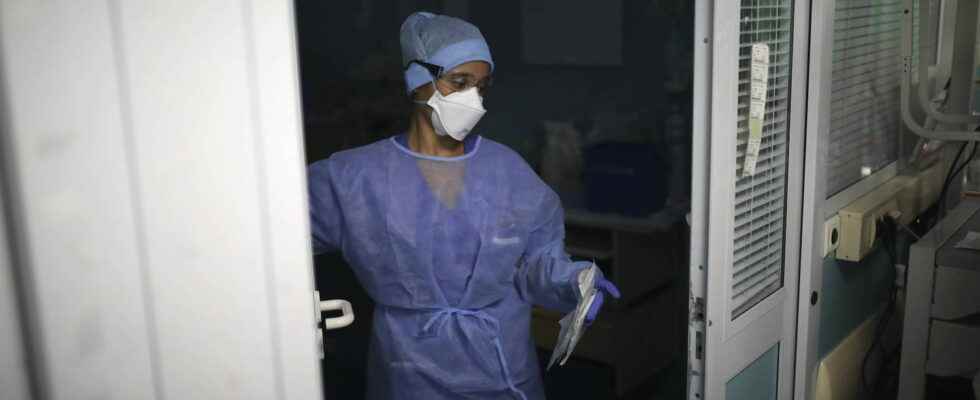COVID. In a memo to the government, the Scientific Council is sounding the alarm and proposing a few leads when we seem to be witnessing a “trivialization of the epidemic in society”.
[Mis à jour le 16 mars 2022 à 18h42] In a new “alert note” issued to the government on Friday March 11, but sent to the press on Tuesday March 15, the Scientific Council warns: “The epidemic is not over!” While an increase in the number of daily cases is currently observed, it evokes a multifactorial rebound. Several explanations are thus put forward such as the relaxation of the population or even the start of the school year and the decline of immunity. In addition, if the Covid-19 epidemic has taken a back seat since the invasion of Ukraine by Russia, the Scientific Council warns that “the number of hospitalizations will increase temporarily in the coming weeks” and is worried about a “trivialization of the epidemic in society”.
Emphasizing the importance of “conservation of protective measures for the oldest, fragile and immunocompromised”, the Scientific Council proposes extending the fourth dose to people aged between 65 and 80 and calls for “accelerating vaccination of children aged 5 to 11 with a medical risk factor” and to boost prescriptions for the antiviral Paxlovid, which limits the risk of severe form. For more information on the figures relating to the coronavirus epidemic in France, you can consult our dedicated article.
Learn more
According to last epidemiological point of Public Health France (SPF), published Thursday March 10, in week 09, “in week 09, the circulation of SARS-CoV-2 slowed slightly compared to the previous four weeks (-7%), auguring stagnation at a high incidence rate”.
- In mainland France, the incidence rate corrected decreases in all regions in week 09 (February 28-March 6, 2022), compared with week 7 (February 21-28, 2022) and remains below the threshold of 1,000 cases per 100,000 inhabitants, being 546 (i.e. -7% compared to the previous week, when the incidence rate was 586 positive cases per 100k inhabitants). This decrease was observed in all age groups and in all regions, notes SPF in its point. On the other hand, the positivity rate (20.6%, +0.2 points) is rising again in all age groups.
- The effective reproduction rate of the virus, says R, increased in week 09. It is evaluated at 0.81 (against 0.63 in W08).
- The number of new hospitalizations of Covid-19 patients fell in S09. The indicators by date of admission showed 5,386 new hospitalizations of patients with Covid-19 in week 09 (compared to 6,948 in S08, i.e. -22%). There were also 632 new critical care admissions of Covid patients in S09, compared to 834 in S08 (i.e. -24%).
- The Omicron variant of the coronavirus is still the majority in France in S09, suspected and confirmed in 99.9% of Flash survey interpretable sequence screening tests in S09 (preliminary data). The BA.2 sub-lineage, sub-variant of the Omicron mutation, is still increasing and is now the majority (52% of cases in S09 vs 43% in S08).
- Vaccination against Covid-19 is still progressing: as of March 8, 2022, 79.4% of the total population had received a complete primary vaccination and 72.8% of those aged 18 and over had received a booster dose (82.6% among eligible people) and 82.9% among those aged 65 and over (91.0% among those eligible).
Follow the evolution of the coronavirus in your municipality thanks to the map below. Click on a department to display the list of municipalities. Also find all the details on this mapping and the complete point by city and by department in our article on the Covid map in France.
Since mid-October 2020, Public Health France has been communicating incidence data (number of cases per 100,000 inhabitants) at municipal level. The figures are at this stage communicated according to a scale (10, 20, 50, 150, 250, 500, 1000 cases per 100,000 inhabitants). The data is expressed over a rolling week, which means that it is calculated on a D-day from tests carried out between 3 and 9 days previously. To access information relating to the coronavirus in your municipality, enter its name in the search engine or click on its department in the map below.
As a reminder, the incidence rate corresponds to the number of new cases of Covid-19 over a period of one week, compared to the total population of a territory (country, region, department or municipality). This indicator is generally expressed as the number of cases per 100,000 inhabitants. The screening rate gives the number of people having carried out a screening test for the coronavirus out of the total number of inhabitants, during the period. It is also most often expressed per 100,000 inhabitants. Finally, the test positivity rate gives the percentage of positive tests for the coronavirus, compared to the total number of tests carried out over the period.
